Alternate name Hukkok Region Levant Excavation dates 2011 | Location Galilee, Israel Part of Kingdom of Israel Excavation date 2011 | |
Weather 11°C, Wind SE at 5 km/h, 87% Humidity | ||
Huqoq 2014 slovakian perspective
Huqoq or Hukkok (Hebrew: חוקוק) was an ancient Jewish village, located 12.5 km north of Tiberias. The area had been settled since ancient times and is mentioned in the Book of Joshua. The Arab village Yaquq was built at Huqoq's location, and a kibbutz named Hukok was established near the site on 11 July 1945.
Contents
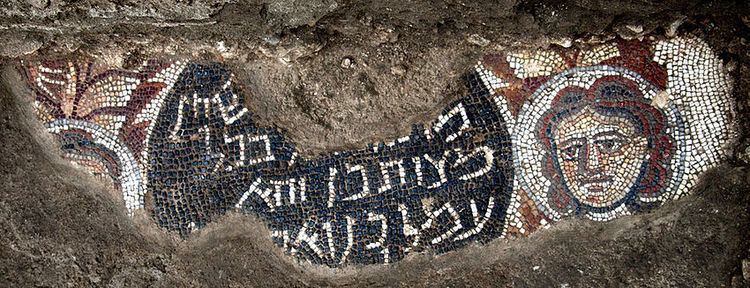
History
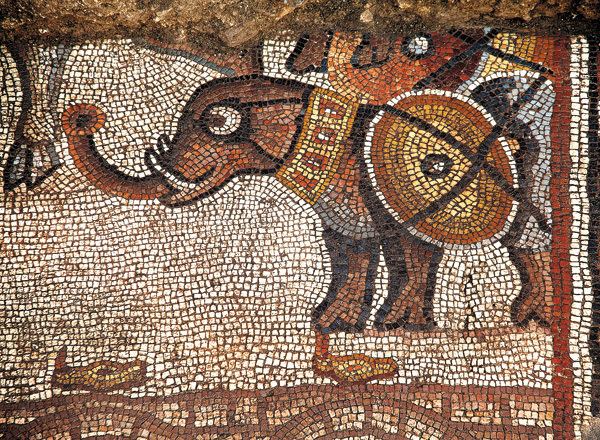
The village site was inhabited in the Early and Middle Bronze Age. The Canaanites called it Hukkok, and during the Roman period it was known as Hucuca.

Hukkok (Hebrew חקק) is mentioned in the Bible in Josh. 19.34. Archaeological investigations at the site of the former village of Yaquq, located near the Sea of Galilee, 12.5 km north of Tiberias, uphill from Capernaum and Magdala, suggest that it was inhabited in the Iron Age, Persian, Hellenistic, Roman, Byzantine, Abbasid, Fatimid, Mamluk and Ottoman periods.
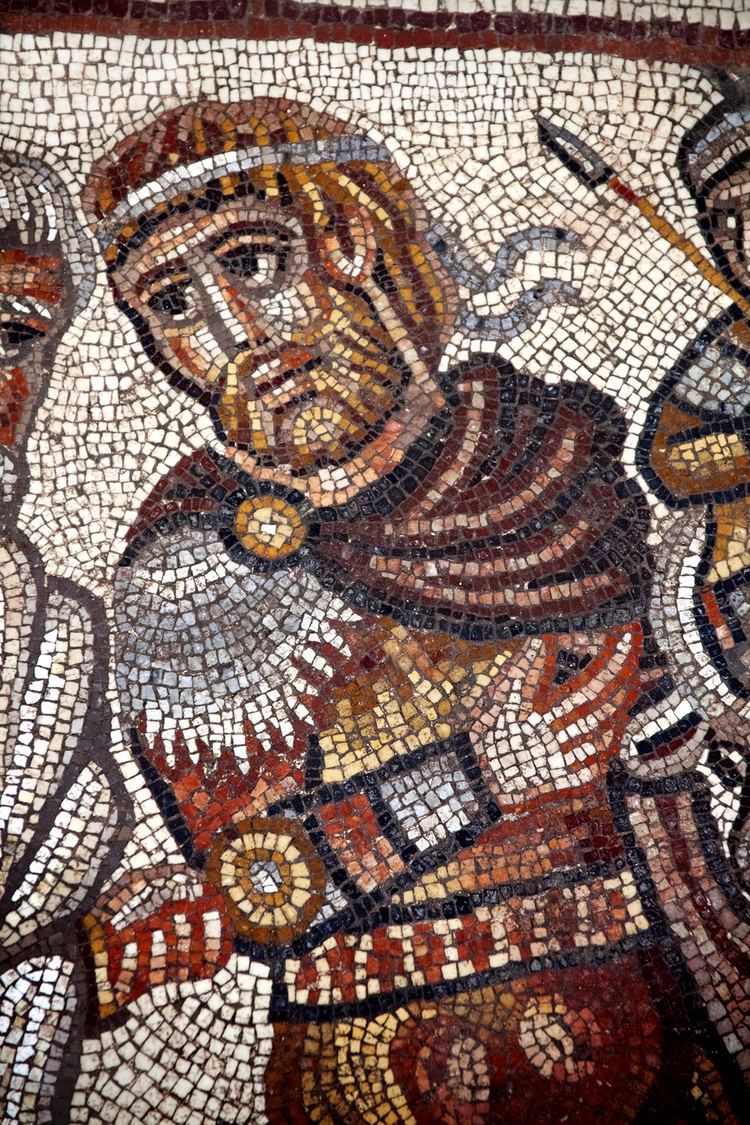
The Roman period village was large and prosperous due to the presence of a constant spring. Archaeologist Jodi Magness told Science News that the "high artistic quality and the tiny size of the mosaic cubes,... together with the monumental size of the stones used to construct the synagogue’s walls, suggest a high level of prosperity in this village, as the building clearly was very costly.” The prosperity of the ancient village contrasts with the simplicity of the Ottoman era settlement and can be seen by archaeologists in animal bones which were cut by professional butchers in the ancient Jewish village, and by farmers in the Muslim period. It is apparent from both the synagogue and the absence of pork bones that the Roman period village was Jewish.
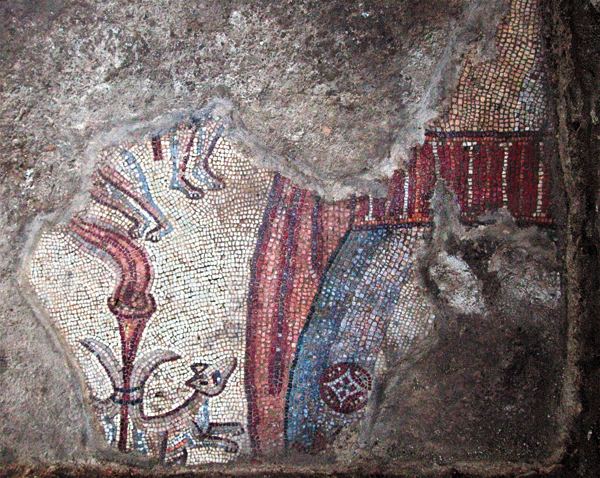
"The ancient village is surrounded by associated features, including cist graves, rock-cut tombs, a mausoleum, quarries, agricultural terraces and installations, a winepress and an olive press. Two large miqwa’ot (ritual baths) are hewn into bedrock on the eastern and southern periphery of the ancient village (see below)."
The village is attested in Late Roman and Byzantine period rabbinic sources.
Archaeological site

A 2011 dig led by archaeologist Jodi Magness excavated several sections at the site of the former village. Among the items uncovered was a mosaic that is said to have adorned the floor of an elaborate 1,600-year-old synagogue.
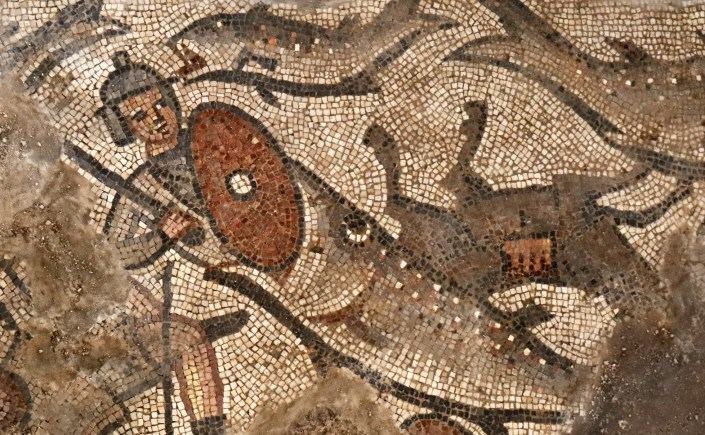
An ancient synagogue uncovered in 2011 is notable for its fine limestone carvings and for a mosaic of the Biblical hero Samson. According to archaeologist Jodi Magness, "This discovery is significant because only a small number of ancient (Late Roman) synagogue buildings are decorated with mosaics showing biblical scenes, and only two others have scenes with Samson (one is at another site just a couple of miles from Huqoq)" Furthermore, "Our mosaics are also important because of their high artistic quality and the tiny size of the mosaic cubes. This, together with the monumental size of the stones used to construct the synagogue's walls, suggest a high level of prosperity in this village, as the building clearly was very costly."
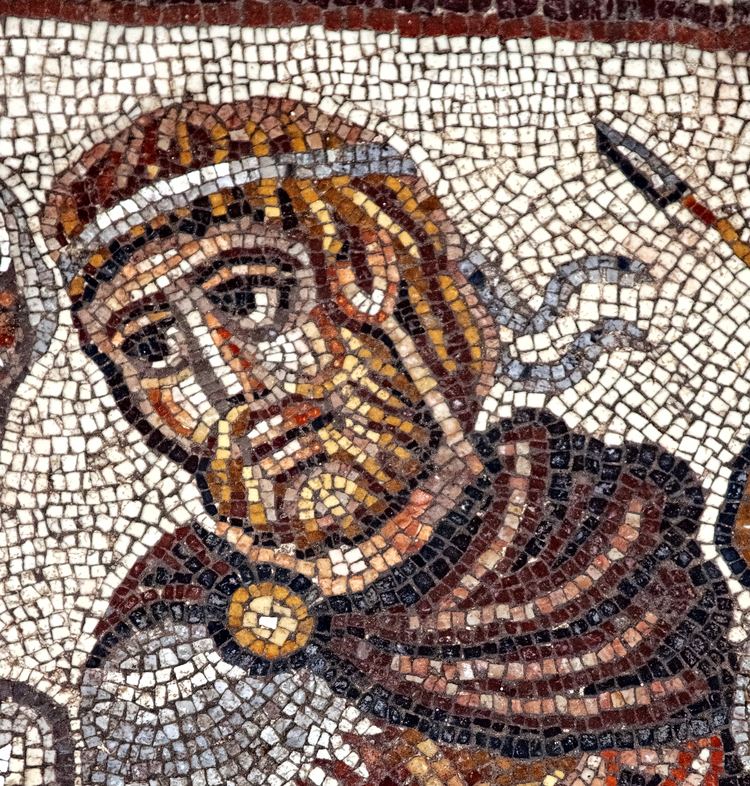
In the mosaic the Biblical Samson is portrayed tying burning torches to the tails of foxes, this is from a Bible story in the Book of Judges in which during a war with the Philistines Samson catches 300 wild foxes, ties burning torches to their tails and sets them loose to set fire to Philistine grain fields. It is flanked by two human faces and a Hebrew inscription referring to rewards for those who perform good deeds.
Tomb of Habakkuk
Jewish, Christian, Druze and Muslim tradition located the tomb of the prophet Habakkuk in Huqoq and it has been a site of pilgrimage since the twelfth century. The earliest mention of the tomb is a letter written by Rabbi Samuel ben Samson (1210): "On our way back from Tiberias we went on to Kefar Hanan. In journeying there we came across the tomb of Habakkuk in Kefar Hukkok." In 1215 Menahem ben Perez of Hebron visited the site, and wrote: "And I went from there, and saw the tomb of the prophet Habakkuk near a spring." The earliest detailed description appears in the book "These are the Travels" (1270– 1291): "From there one goes to Ya‘aquq, where is the grave of the prophet Habakkuk, upon which there is a fine monument between four party walls."
An Englishmen named John Sanderson visited the tomb in 1601 and wrote "Then we passed by a little village where dwelt and is buried the prophet Abicoke; so said the Jews, and that the town was called Yeacoke."
A description from the 1930s, states that "The tombstone. . . is built of basalt stones, about two metres wide and 1.5 metres long, covered in white plaster". It was replaced by a modern tombstone in 1981 over which was built a small building and pool to catch the waters of the spring as a ritual bath. Jewish and Druze pilgrims continue to visit the tomb.
However, Seffi Ben Yosef questions the tradition, which was only based on the similar-sounding name between the village and the prophet. He also notes that the grave was earlier known as being that of Sheik Hassan.
